Input: sensor
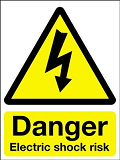
WARNING: To avoid the risk of electric shock, only operate the eBOX only when unplugged from electricity.
In this procedure we will see how to connect a sensor to eBOX through an input.
1. Select the sensor
For this case, we will use this photoelectric sensor.
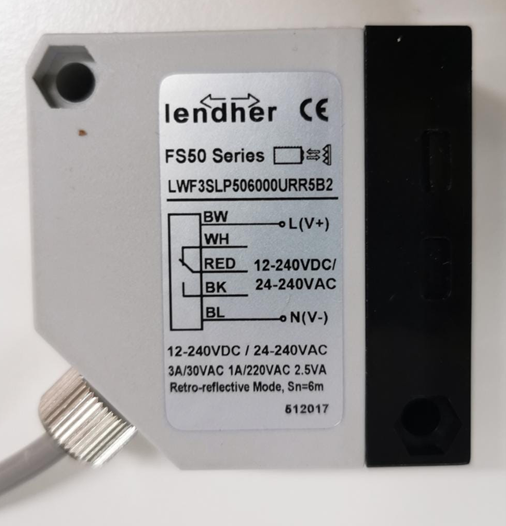
If you look at its legend, there are 5 connectors:
- BW (brown cable) [Positive power supply L(V+)]: Common cable connected to +24 V
- WH (white cable) [Normally opened Contact]: Cable that sends 24V to the PLC when the sensor is excited and 0V when not.
- RED (red cable) [Voltage input to the sensor’s circuit]: Positive input cable to the sensor’s working voltage.
- BK (black cable) [Normally closed contact]: Cable that sends 0V to the PLC when the sensor is excited and 24V when not.
- BL (blue cable) [Neutral power supply N(V-)]: Common neutral input cable.
WARNING: Your sensor could have different colours for the same or different cables. Therefore, before starting the procedure, check and identify in the legend of the sensor to which cable of the indicated here correspond each one.
2. Basic sensor connection to eBOX
Let us connect the edinn eBOX:
- Unscrew and remove the cover:
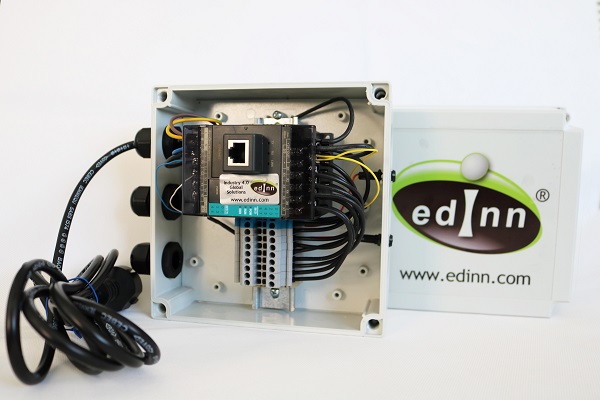
- View, inside the eBOX, which connector is the +/-24V output and the XN signal. N being the number to which you want to connect the sensor:
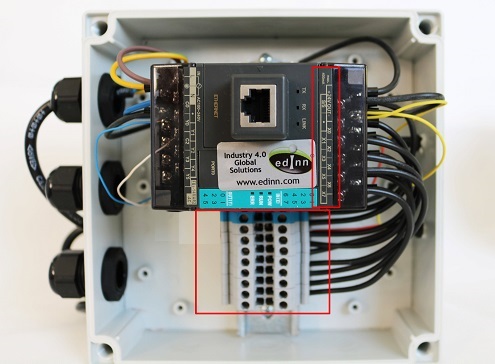
- Pass the cables of the sensor, 5 in this case, through one of the holes (cable gland) of the eBox.
- Connect the blue cable to connector marked in blue in the following image (output +24V) and the brown cable to connector marked in brown in the following image (output -24V):

- Connect the yellow cable to the connector marked in blue in the following image (output +24V):
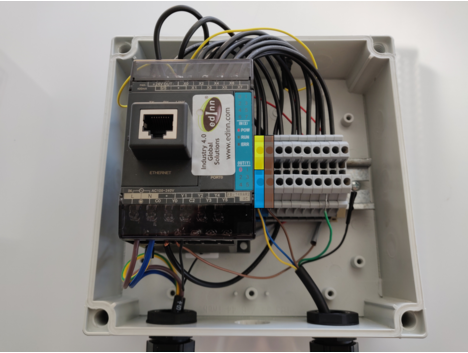
- Connect the green cable to the entry to which you want to send what is captured by the sensor. In our case we choose the input X3 marked in green in the following image:
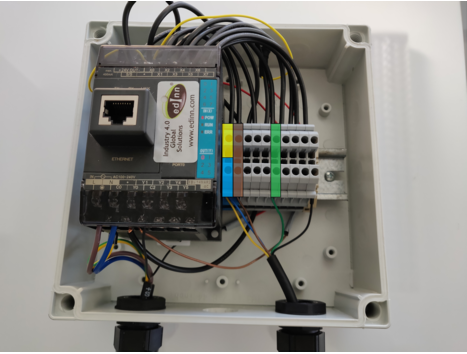
- End of the procedure.
WARNING: Check with a multimeter that the eBOX is reciving +24V each time the sensor detects a pulse through the reflector.
For more information about the eBOX, check the document eBOX_200B_specs_en.pdf from the edinn Academy, IoT area here ![]()
